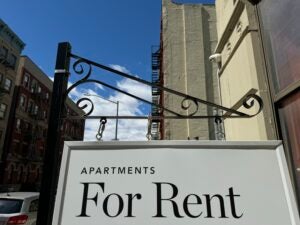Hottest housing markets shift from popular Sun Belt metros to Northeast and Rust Belt

Key takeaways
- Overheated pandemic housing markets are cooling fast, particularly across the Sun Belt, according to Bankrate’s 2025 Housing Heat Index.
- Four of the five coldest housing markets this year are in Florida, including Cape Coral-Fort Myers, Punta Gorda, North Port-Sarasota-Bradenton and Naples-Marco Island.
- The five hottest housing markets in 2025 are located in the North or along the Rust Belt, including New Haven, CT, Rockford, IL and York-Hanover, PA.
Housing markets that were boiling hot during the pandemic, particularly across the Sun Belt, are now cooling off.
The momentum in the U.S. housing market has shifted toward Rust Belt and New England metros this year, according to Bankrate’s 2025 Housing Heat Index. Housing markets in places like New Haven, CT, Rockford, IL, York-Hanover, PA and Syracuse, NY, are surging with demand and tight inventory.
In the five hottest markets, home prices have appreciated by at least 9 percent over the past year, homes are selling quickly and housing inventory is slim in comparison to their populations. The only Sun Belt metro to land in the index’s overall top 5 was Charleston-North Charleston, SC, largely due to its strong job market, continued home appreciation and growing population.
Sun Belt metros like Cape Coral-Fort Myers, Punta Gorda and Sarasota, which had hot housing markets in 2023, now have the coldest housing markets, partly because of new construction swelling in the face of sluggish demand. In these markets, price reductions and homes staying on the market for months have become more of the norm.
But cooling conditions are actually a good thing for prospective homeowners in those markets, according to housing experts. It means those regions are building much more than other parts of the country, which is just the thing that buyers need to combat housing affordability fatigue.
Bankrate’s Housing Heat index effectively shows where sellers—and buyers—have the most bargaining power so far this year. It ranked both the top 212 metropolitan statistical areas (MSA) and the top 50 MSAs by population based on home price appreciation, housing availability, market competitiveness, population growth and labor market health.
Southern states are seeing cooling in regard to prices, especially in Florida and Texas, partly due to the fact that they have built much more in relation to the New England states. So, it is really about supply.— Lawrence Yun, chief economist at the National Association of Realtors
Northeast and Rust Belt have the hottest housing markets
The Northeast and Rust Belt dominated the top of Bankrate’s Housing Heat Index this year: 11 of the 20 hottest housing markets are located in those regions. According to Yun, the shifting momentum toward Northeastern and Rust Belt markets can be attributed to two factors: location for Northeast markets and affordability for Rust Belt markets.
The Midwest offers that opportunity [to buy] because of affordability,” Yun said. “ Compared to the rest of the country, the Northeast just lacks supply. Maybe a gradual return to office or even a hybrid return to office…I think that may be fueling some of the extra demand at a time when there’s no supply.”
Among metro areas of all sizes, these were the five hottest:
- New Haven-Milford, CT: The New Haven metro area moved from 82nd place in our 2023 Housing Heat Index to 1st place in this year’s index. It ranked No. 1 in home appreciation, and it also has fewer active listings per 1,000 residents, ranking No. 15 overall, an indicator of how heated the market is. New Haven ranked poorly in other metrics in the study that influence a housing market’s temperature: It ranked 187th in job growth, 91st in employment and 126th in population growth.
- Rockford, IL: This metro area has heated up in terms of home appreciation and market competitiveness over the last two years, jumping from 196th place in our 2023 index to 2nd place in this year’s index.
- Norwich-New London, CT: Multiple Connecticut metros have hot housing markets this year, including Norwich-New London, which moved from 54th in 2023 to 3rd in 2025. This metro ranked well in year-over-year home appreciation (5th), and the limited number of homes that are for sale are getting snatched up quickly (23rd for active listings per 1,000 residents and 42nd for days on market).
- Charleston-North Charleston, SC: The Charleston metro area was the only Sun Belt metro to crack the top five of this year’s Housing Heat Index. It came in 41st in appreciation, 21st in population growth and 9th in job growth.
- York-Hanover, PA: Moving from 79th to 5th place between 2023 and 2025, York-Hanover’s home prices have grown significantly year over year (No. 17), while inventory has gotten tighter. It ranked 36th for active listings per 1,000 residents and 12th for median days on market.
Four of the five hottest markets were priced lower than the national median ($441,000 as of May, per Redfin). Rockford, IL, with a median list price of $205,000 as of May 2025, was the study’s lowest-priced market among the top 5 hottest markets, while Charleston-North Charleston, SC was the highest-priced, with a median price of $455,000 as of May 2025, according to Redfin data.
Coldest housing markets are along the Sun Belt
Sun Belt housing markets — which saw an impressive growth spurt during the pandemic — still boast strong job markets and continued population growth, but home prices are cooling.
These areas experienced a surge of people during the pandemic and large run-ups in home prices. Much of that is now being corrected by inventory growth, slower population growth and lower buyer demand, effectively giving buyers more bargaining power in those markets. Housing experts said these now-cooling markets got so hot during the pandemic housing boom that they attracted new construction.
In the South, part of the reason why inventories are recovered and more than recovered is because these places have built so much. These metro areas got larger in terms of population, footprint and homes. The reverse is true in the Northeast, the Midwest and Rust Belt, where there were housing shortages before the pandemic. Those [housing shortages] have only been exacerbated because these places haven’t built their way through the demand.
— Jake Krimmel Senior economist at Realtor.com
Overall buyer demand has diminished across the country because of elevated home prices and 6-7 percent mortgage rates, especially in colder housing markets. Rising home insurance and property taxes, particularly in Florida markets, have only exacerbated housing affordability challenges. Many potential buyers are waiting on the sidelines for either home prices or rates to drop, leaving homes for sale to sit idle on the market.
However, that trend may change in cooling markets where home prices are modestly declining, according to Jake Krimmel, senior economist at Realtor.com.
“This tells you that there’s a little bit of a holding pattern or a standoff going on where there’s more inventory in the market than before, but median list prices aren’t dropping by all that much, if at all,” Krimmel said. “ It’s gonna take someone [buyers or sellers] to give in to that standoff to make sure that these deals can be made.”
These metros are experiencing the chilliest housing market conditions:
- Cape Coral-Fort Myers, FL: Much of Florida’s real estate is increasingly shifting toward a buyer’s market, including the Cape Coral-Fort Myers metro area. This Florida metro moved from 3rd place in 2023 to last place in our Housing Heat Index this year. It ranked last in year-over-year appreciation (No. 212) and near the bottom for active listings per 1,000 residents and days on markets (No. 210 for both). It also ranked in the bottom half for job growth (No. 194) and employment (No. 107).
- Punta Gorda, FL: Like many other Florida metros, Punta Gorda has cooled down significantly from its highs during the pandemic. Except for year-over-year population growth, it landed in the bottom half of every category in Bankrate’s index. It came in last place for active listings per 1,000 residents, an indicator that there’s a plethora of inventory in relation to its population.
- North Port-Sarasota-Bradenton, FL: This metro area is also shifting toward a buyer’s market. The metro area ranked 211th in appreciation, 208th in active listings and days on market and 103th in job growth. In 2023, the North Port-Sarasota-Bradenton metro area ranked 4th overall for market hotness.
- Shreveport-Bossier City, LA: Much of the Southeastern housing market is cooling, and Shreveport is no exception. This metro was below average in every category in Bankrate’s index, except for year-over-year job growth (No. 48). It ranked 210th in home appreciation and 198th in appreciation.
- Naples-Marco Island, FL: This once hot housing market landed in the bottom five of this year’s index. Home appreciation in Naples-Marco Island has slowed, ranking 150th this year. It also ranked poorly in active listings and median days on market (211th and 212th, respectively).
Yun said he’s not concerned by price declines in formerly hot markets such as Texas and Florida. His reasoning: Job growth migration remains strong in many Sun Belt metros, so any slump in home prices is likely to reverse in the longer term.
“ The job growth migration is still solid,” Yun said. “It’s just that temporarily there’s an oversupply, and it’s not being translated into housing demand because of high interest rates. Once interest rates decline meaningfully, it could switch from housing surplus in the Southern states to a housing shortage again.”
Hottest large housing markets
Among the largest 50 metro areas, the hottest areas are:
- Hartford-East Hartford-Middletown, CT: Hartford and its suburbs ranked No. 1 for home price appreciation. It also has fewer active listings per 1,000 residents (No. 2) and homes are selling quicker (No. 5 for days on market) compared to other large metros. Hartford also ranked in the top half for job growth (No. 31), employment (No. 20) and population growth (No. 34).
- Philadelphia-Camden-Wilmington, PA-NJ-DE-MD: As one of the more affordable areas in the Northeast, the Philadelphia metro area is reeling buyers in. It ranked 3rd for home appreciation and 17th for job growth. Homes are getting snatched up quickly amid tighter inventory conditions in this region, ranking 12th for active listings per 1,000 residents and 13th for median days on market.
- Columbus, OH: Columbus landed in 15th place in 2023, and this Rust Belt market has heated up even more over the last two years. Home appreciation for Columbus landed in the 9th spot, with several other categories following closely behind. Columbus’ rankings for job growth, active listings, days on market and population growth were in the top 20.
- New York-Newark-Jersey City, NY-NJ-PA: The Big Apple had a top-five finish in home appreciation and ranked in the top 15 for active listings per 1,000 residents and job growth. The New York City metro area landed in 43rd place in Bankrate’s 2023 Housing Heat Index.
- Detroit-Warren-Dearborn, MI: The Detroit metro area had one of the coldest housing markets just two years ago, landing in 48th place in 2023. Demand, along with home appreciation, has ticked up since then. Among the 50 largest metros, it ranked 4th in year-over-year home appreciation.
Coldest large housing markets
The bottom five large metro areas are:
- New Orleans-Metairie, LA: The New Orleans metro area landed at the bottom of Bankrate’s 2023 Housing Heat Index and continues to struggle with its housing market in 2025. It experienced the third-worst home appreciation year over year, and homes tend to stay on the market longer than other large metros (No. 48 for days on market). It ranked in the bottom half of every category in Bankrate’s index, except year-over-year job growth (No. 5).
- Memphis, TN-MS-AR: Home of the Blues ranked in the bottom half of every category in Bankrate’s index this year. It placed 38th for home appreciation, last for job growth and second to last for population growth.
- San Francisco-Oakland-Berkeley, CA: This notoriously expensive metro ranked second to last in home appreciation and job growth, but inventory is still tight. It ranked 10th for active listings per 1,000 residents and 13th for days on market, an indicator that there aren’t many options in this market for buyers, but they’re still purchasing what is available.
- Denver-Aurora-Lakewood, CO: The housing market in this popular Western metro has been cooling down over the last two years, ranking 45th in home appreciation and 40th in active listings per 1,000 residents. Job growth has also slowed in the Denver metro over the last year compared to areas in the country (No. 46).
- Tampa-St. Petersburg-Clearwater, FL: The Tampa metro area dropped from the top five in 2023 to the bottom five this year. It came in 46th place for year-over-year home appreciation, but this metro continues to see steady job and population growth (No. 12th and 15th, respectively).
How to navigate today’s housing market, whether you’re a seller or a buyer
The housing market may be shifting, but it’s not crashing. It’s more of a recalibration, especially in popular Sun Belt metros where home prices shot up by at least 40 percent during the multi-year pandemic housing boom, according to housing experts.
”We knew even then that [price growth] wasn’t sustainable,” said Mark Middleton, principal agent and founder of Middleton Tampa Bay. “ Affordability was a big draw. The Florida real estate market for decades has been undervalued, and it was inexpensive to live here. I heard people comparing what was happening at the time in Florida to what happened 20 years earlier in California.”
National data can paint a broader picture of the U.S. housing market, but real estate is local and market conditions will ultimately depend on the neighborhood, price tier and home type. Whether you’re buying or selling, it’s important to pay attention to your local trends and work with a local real estate agent who knows your market well. They’ll know the ins and outs of your market: what’s trending, what buyers want and how to price or negotiate smartly. With a realtor’s guidance, you’ll feel more confident making the right moves depending on how your local market’s behaving.
Without good information, they’re [buyers or sellers] not gonna be able to make good decisions.
— Mark Middleton Principal agent and founder of Middleton Tampa Bay
Buyers
If you’re shopping for a home in a cooling market, here are some things to keep in mind:
- Get pre-approved: A pre-approval letter shows sellers you’re serious about buying a home. It tells them you’ve spoken to a lender, know what you can afford and you’re ready to make an offer. That can give you an edge over buyers who haven’t taken that step yet. Besides the advantage of being a competitive buyer, it also gives you a clear picture of your budget.
- Explore your options with peace of mind: For years, buyers have been racing to snag homes because of the fierce competition. But the market’s cooled off a bit now, and that gives buyers some breathing room. Homes are staying listed longer, so buyers can slow down, weigh their options and make more confident decisions.
- Don’t skip your due diligence: Back when competition was intense during the pandemic, buyers were skipping important due diligence, like home inspections, just to stay in the game. That’s no longer necessary. These days, you should insist on a full house inspection and wait for the results before moving forward.
- Consider negotiating: Not long ago, offering more than the asking price was the norm. Now, with fewer bidding wars, you’ve got more room to negotiate. Whether it’s the price, closing costs or repairs, don’t be afraid to push for a better deal.
Sellers
Buyers might be gaining some ground, but sellers still have the upper hand in most areas. If you’re a seller or thinking about selling right now, housing experts recommend the following:
- Be smart about your pricing: Buyers are still out there, but they’re getting pickier, especially with higher prices and sub-6 percent mortgage rates in the mix. If you price your home right from the start, you’re more likely to catch buyers’ attention. Price the home too high, and you risk turning buyers away.
- Timing (and location) matters: The U.S. housing market continues to lean in favor of sellers, but real estate is local. If you’re in a hot area and are thinking about selling, now might be a good time to put your home on the market. On the flip side, if your market is cooling off, having a local real estate expert by your side is key. They can help you pick the right moment to list and make sure your home stands out from the competition in your area.
Why we ask for feedback Your feedback helps us improve our content and services. It takes less than a minute to complete.
Your responses are anonymous and will only be used for improving our website.
You may also like

Home equity rates hold steady at two-year lows





